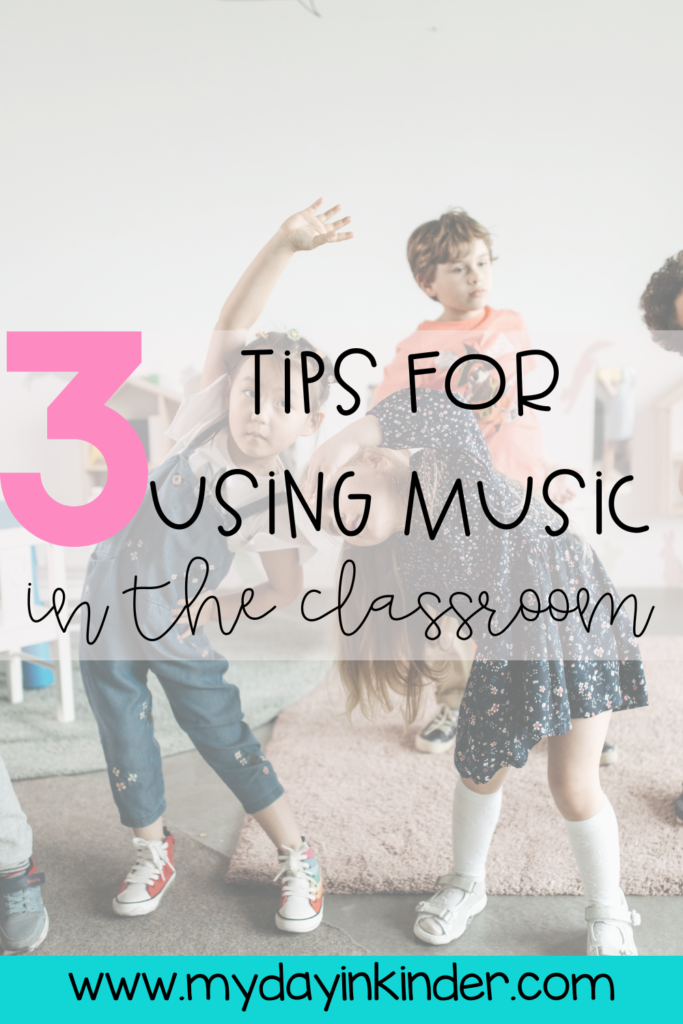The Simple Power of Music For Classroom Transitions
We’re well aware of the challenges that come with managing classroom transitions. Whether it’s shifting from one subject to another, moving from individual work to group activities, or simply transitioning from one part of the day to the next, smooth transitions are key to maintaining a positive and productive learning environment. One effective tool that teachers often overlook is the use of music for classroom transitions. You’d be surprised how much music can be a game-changer in facilitating seamless transitions in the classroom.
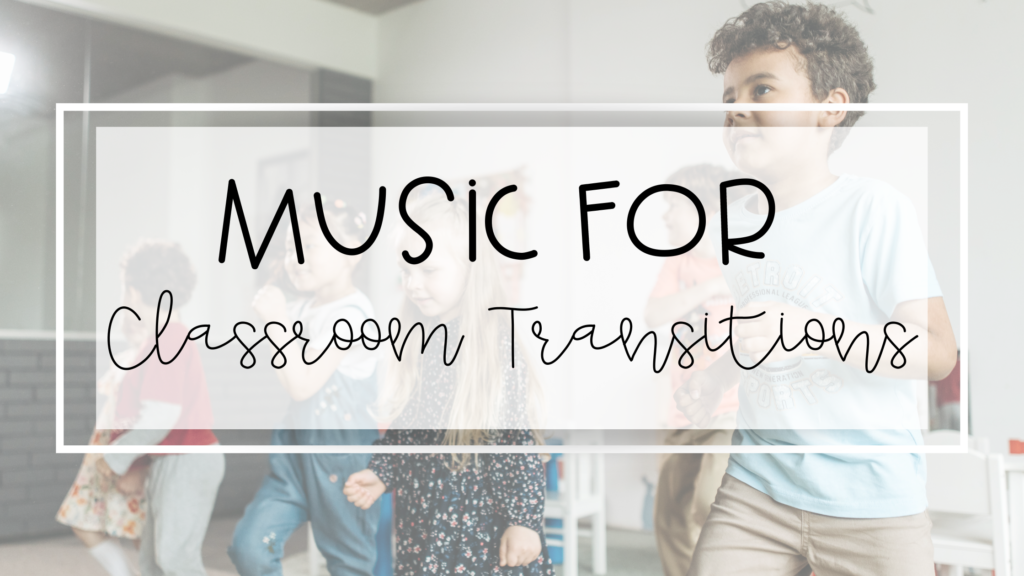
The Role of Music in Classroom Transitions
Music can serve as a sort of guide, helping students move smoothly from one activity to the next. Music sets the mood and gets students’ attention, making transitions easier for everyone involved. Understanding how music works in transitions can make your classroom feel more organized and enjoyable for everyone.
Setting the Tone with Music
Music has the remarkable ability to set the tone and atmosphere in any environment, including the classroom. By carefully selecting appropriate music, teachers can signal to students that a transition is about to occur, helping them mentally prepare for the upcoming change. Whether it’s calming classical melodies or upbeat tunes, the right choice of music can influence students’ moods and behaviors, making transitions smoother and more enjoyable.
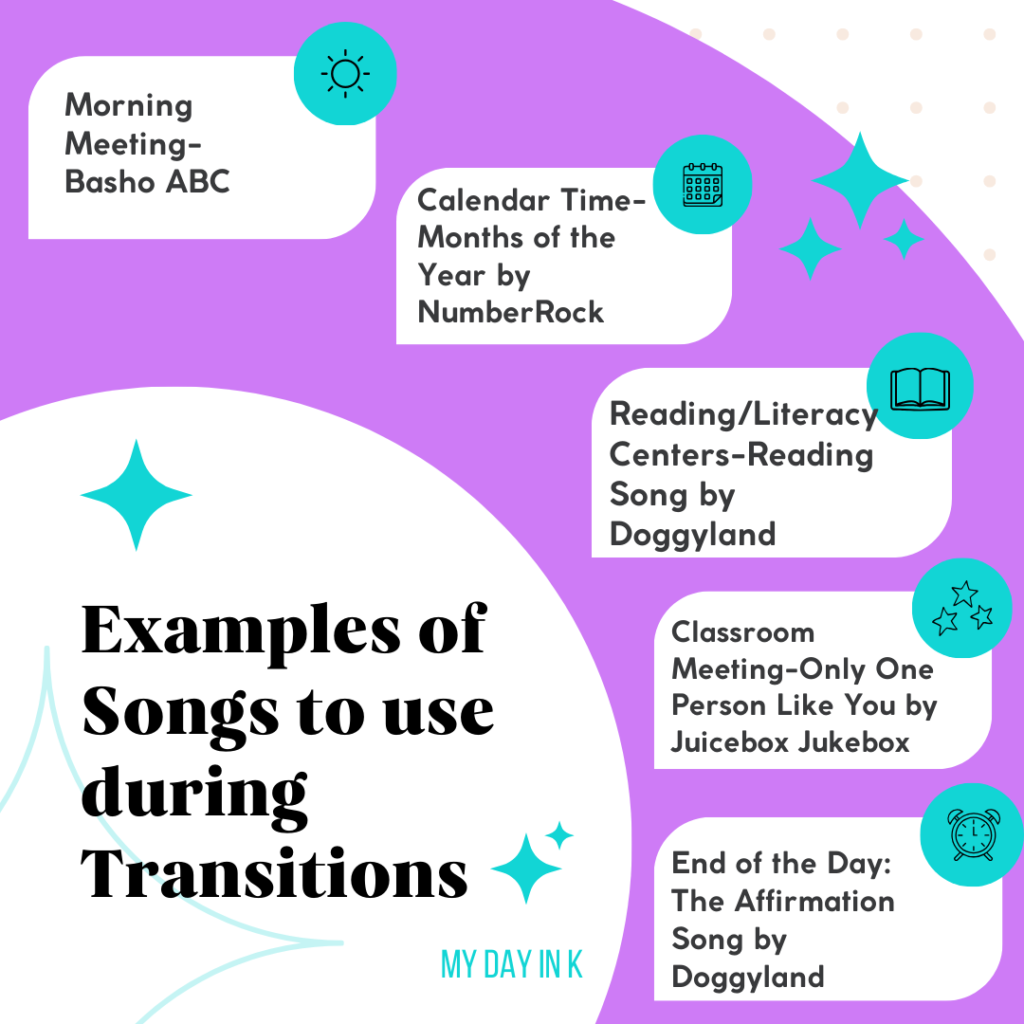
Using Music to Capture Attention
One of the biggest challenges during transitions is capturing students’ attention and redirecting their focus. Music can be a powerful attention-grabbing tool, drawing students’ focus away from distractions and toward the task at hand. Using catchy tunes or rhythmic beats can help create a sense of urgency and excitement, motivating students to transition quickly and efficiently.
Practical Tips for Implementing Music in Classroom Transitions
These practical tips will help you create a harmonious atmosphere that keeps students engaged and focused during shifts between activities. From building the perfect playlist to involving students in the selection process, these tips will help you use music’s power effectively.
Create a Music Playlist
Compile a variety of songs that suit different transition periods throughout the day. Consider incorporating calming music for quiet individual work time, energetic tracks for group activities, and transition songs to signal the end of one task and the beginning of another. Having a well-curated playlist at your disposal makes it easy to integrate music into your daily routine seamlessly.
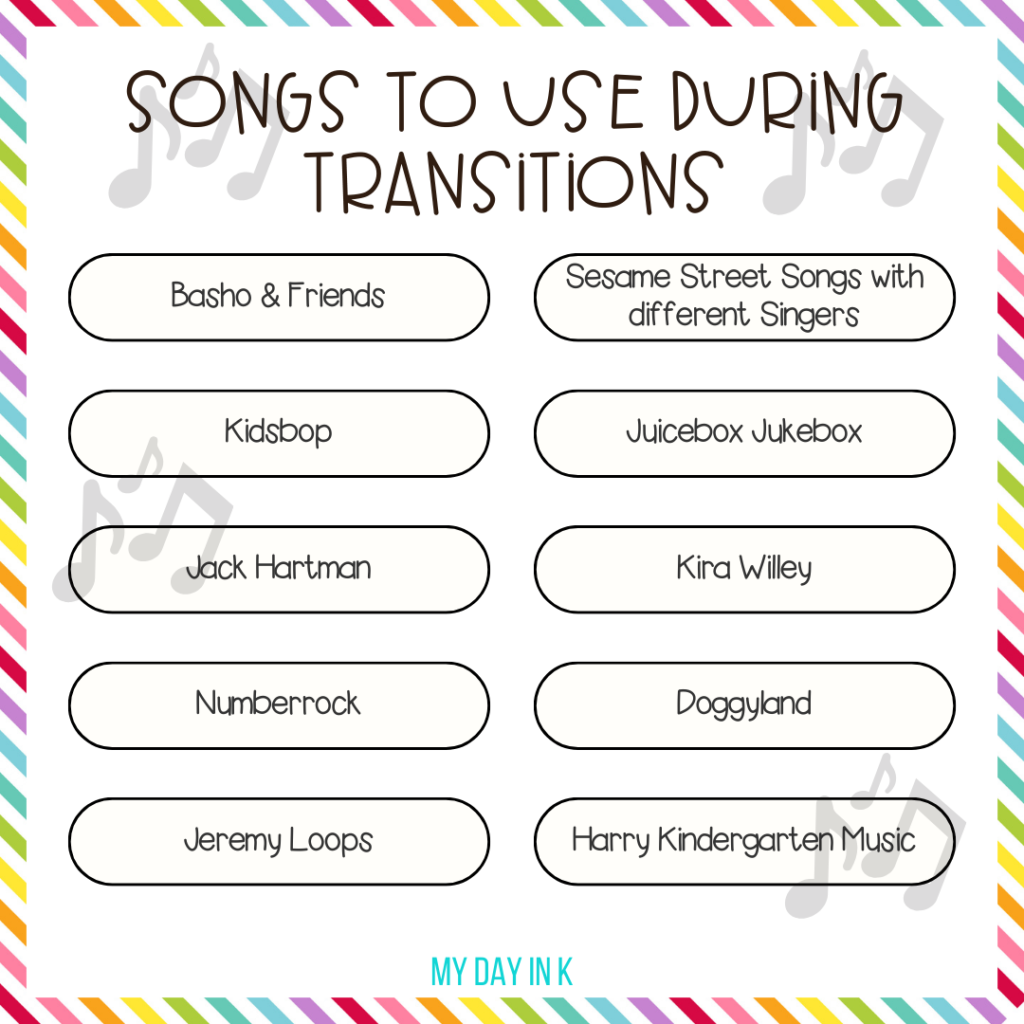
Involve Students in the Music Selection Process
Empower your students by involving them in the selection of transition music. Encourage them to suggest songs they enjoy or find motivating. By giving students a voice in the decision-making process, you foster a sense of ownership and engagement and ensure that the music resonates with their preferences and interests.
Be Mindful of Volume and Tempo
When using music for transitions, it’s important to be mindful of volume and tempo. Opt for music that enhances the transition process without overwhelming or distracting students. Experiment with different volume levels and tempos to find the right balance that promotes focus and productivity.
The Benefits of Music During Classroom Transitions
Music isn’t just a pleasant background noise; it actively contributes to the smooth functioning of the classroom environment.
Quick Benefits:
- Enhanced Focus: Music helps capture students’ attention and redirects their focus, making transitions smoother and more efficient.
- Mood Regulation: The right choice of music can create a calming or energizing atmosphere, depending on the needs of the transition, helping students transition between tasks with ease.
- Creating a Harmonious Atmosphere: Music has a remarkable ability to create a harmonious atmosphere in the classroom. It sets a positive tone for transitions, reducing anxiety and stress levels among students.
- Promoting Engagement and Participation: Music sparks engagement and encourages active participation during transitions. It adds an element of fun and excitement to the process, motivating students to move between activities with enthusiasm.
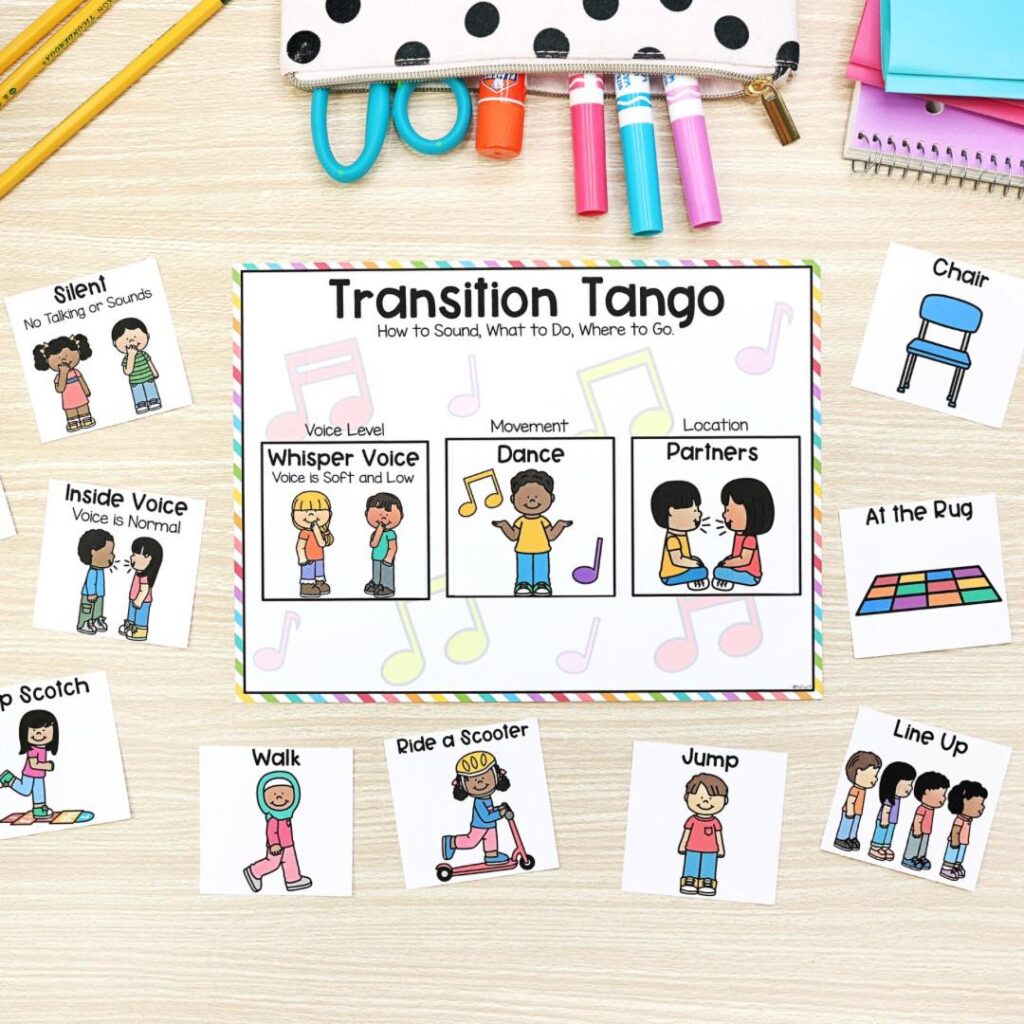
Incorporating music into classroom transitions can transform the learning environment, making transitions smoother, more engaging, and enjoyable for teachers and students. So, the next time you face the challenge of transitioning between activities, consider pressing play and letting the music guide the way.
